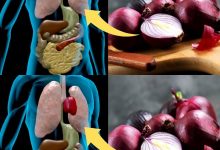There are also many poisonous plants in the wilderness that you must never make contact with. Here we’ll show you how to identify the common ones you’ll likely encounter when hiking that you should not touch. Know how to identify the common ones, and you’ll avoid any aggravating rashes.
Poison Ivy (Toxicodendron radicans)

Poison Ivy is the most common poisonous plant you’ll encounter and causes an itchy rash for most people who touch it. The rash is caused by urushiol, a clear liquid compound found in the sap. Despite its common name as ivy, poison ivy is not a true ivy because it does not always climb. It is variable in its appearance and habitat. It is found growing as a shrub, a trailing vine along the ground, or climbing fences, posts, and trees.
Identify by: A woody stem (no thorns) with clusters of 3 leaves consisting of 2 opposing leaflets and 1 larger terminal leaf. Each group of three leaflets grows on its stem, which connects to the main vine. Leaflets may have a notch. Flowers are yellow-green (appearing May – July) in clusters near the round, waxy white berries.
Found: Nearly everywhere, especially along fences, trail posts, and stone walls in North America, Asia, Bermuda, & Bahamas.
Caution: 80% of the human population is allergic to urushiol, the oil excreted by poison ivy and poison oak. It is not poisonous to most wildlife. Animals often consume the leaves and birds consume the berries. The berries are a staple food for birds during the winter months. The birds spread poison ivy after excreting the seeds contained in the berries.
Symptoms: Red rash, inflammation, spreading blisters and scabs 4 to 24 hours after contact. Can cause temporary blindness if oil gets into the eyes. Never touch any portion of the plant, even in the winter when it appears dormant. The leaves of the plant do not have to be intact for you to get a rash.
Poison Oak (Toxicodendron diversilobum – Western U.S; Toxicodendron pubescen – Eastern U.S)

Poison Oak is a low-growing shrub (up to 3 ft tall) with compound leaves containing 3 leaflets. Unlike poison ivy, the leaflets are lobed with rounded edges, which give it the appearance of an oak tree leaf. The “oak” in the common name refers to the fact that the leaves resemble those of the white oak tree. Coincidentally, poison oak tends to climb on the trunk of Oak trees. Leaves are brighter on the top side and slightly hairy underneath. Flowers are yellow-green (appearing May – June) in clusters near the hard waxy berries (berries turn white during autumn).
Found: Most common form on the western U.S. coast (diversilobum), also called ‘Pacific Poison Oak,’ is found growing at sea level at elevations up to 5,000 feet in dry woodlands. The eastern form, also known as ‘Atlantic Poison Oak’ grows in dry sandy soils, predominately in the southeastern states.
Poison Sumac (Toxicodendron vernix)

Sumac is a small tree (up to 25 feet) with a few wide-spreading branches. It likes water and is usually found in the eastern U.S. in wet soils in and around swamps and marshes. The compound leaves are pinnate, containing an odd number of leaflets, usually between 7-13 in number. The leaflets are 2 to 4 inches long with a smooth edge and pointed tip. Because it is tall, sumac poisoning tends to affect the face and head. The flower and fruit from poison sumac are very similar to those of poison ivy and poison oak.
Found: Southern U.S. near swamps, especially common along the Mississippi River.
Poison Ivy Relatives
You are less likely to encounter the following plants unless you where they flourish. Unlike poison ivy, they require more specific growing conditions. They are no less dangerous to touch, and the effect of poisoning is very similar to that of poison ivy. Some of the nastiest species, such as poisonwood, are found in South Florida in sandy coastal areas and tropical hammocks.
Poison Wood (Metopium toxiferum)

If you ever hike the Florida Trail or south Florida, you should be aware of Poisonwood. The black sap that drips from the peeling bark contains urushiol resin that causes severe skin irritation.
Poisonwood is an evergreen tree that can reach up to 35 feet high. It has a short trunk with stout arching limbs and drooping branches that form a spreading, rounded crown. It is often smaller (as a shrub) in pine forests and larger (as a tree) in the hammocks. You can easily recognize it by the drooping pinnately compound glossy green leaves that are outlined with a yellow border. There are commonly 5 leaflets that are 6 to 10 inches long and alternately arranged. The tree bark is reddish-brown and has dark, oily patches from the gummy sap. The bark is a lighter color when it is a shrub.
Avoid walking under poisonwood trees while it is raining or after recent rain. The sap is very sticky, and if you get any on your skin, it must be washed off with soap and water. Water alone will not dissolve the sap. You can use an alcohol-based hand sanitizer in the absence of soap. Note: Poisonwood is related to the Manchineel tree, one of the most poisonous trees in the world. The Machineel tree is rare in the U.S.; a few exist in southern Florida.
Found: Most common in South Florida near the Florida Keys and Everglades National Park.
Other Urushiol Plants
Many other plants in the Sumac family contain urushiols, such as the Mango tree, the Rengas tree, the Lacquer tree, the shell of the cashew nut, and Ginkgo biloba. While these are less common or nonexistent in the U.S., you should know how to identify these plants if you are planning to hike in an area where they are known to grow.
Stinging nettle is another plant that can cause contact dermatitis. While the reaction is mild compared to the plants above, it can still produce blisters.
Stinging Nettle (Urtica dioica)

If you ever hike in the southeastern part of the U.S., you’ll almost certainly encounter stinging nettle, a perennial unbranched upright shrub, 2 – 4 feet tall with needle-covered leaves. It produces small stunning whitish flowers in the summer. If you touch the leaves, the stinging hairs will get into your skin and create a burning sensation and itching. Some people also develop blisters.
Stinging nettle has a long history of medicinal and culinary use. The young leaves offer excellent nutrition and can be eaten if cooked (cooking inactivates the harmful effect). If you can positively identify it, try eating the young leaves of stinging nettle on your next thru-hike. Pick the smaller leaves (less than 6″ tall) and use gloves when picking and handling them. The leaves have a flavor similar to spinach and are high in calcium, iron, vitamin A & vitamin C.
Found: Moist and shady areas across the U.S.
Points to Know
- “Leaves of three, let it be” is a common way to remember what poison ivy & poison oak look like; however, there are many other 3 leaflet plants that are harmless; if you blindly followed this, you could miss out on plants with edible berries, such as strawberries and raspberries!
- The edges of the poisonous leaf can be smooth or contain teeth, and the top surface may be glossy or dull.
- Leaflets can change color during the season – may be green in spring, yellow-green in summer, and red in fall.
- Cluste
 rs of white berries develop during early summer, turning gray later in the season. The berries are smooth and hard to the touch.
rs of white berries develop during early summer, turning gray later in the season. The berries are smooth and hard to the touch. - Don’t “punish” a poisonous plant by burning it. The urushiol oil vaporizes and is toxic to the lungs if inhaled.







